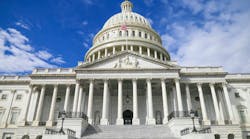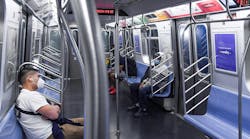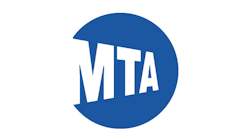New York State Comptroller: MTA is facing ‘the greatest crisis in its long history’
New York State Comptroller Thomas P. DiNapoli released his offices’ annual report on the Metropolitan Transportation Authority’s (MTA) finances and said the transit service provider is “facing the greatest crisis in its long history, with few viable options without federal funding to avoid cuts in service and staff, additional fare hikes and long-lasting damage that could impair regional transit for decades.”
DiNapoli warns a multi-generational recovery could occur should additional federal funds not be delivered to help bridge the ever-widening gaps MTA is projecting due to the COVID-19 pandemic.
MTA reports its deficit to be $16.2 billion by 2024 with DiNapoli’s report targeting the deficit at $19.1 billion at the end of 2024.
A rundown of the gaps and their corresponding year:
- $3.4 billion in 2020,
- $6.3 billion in 2021, which equals approximately 53 percent of MTA’s annual projected revenue,
- $3.8 billion in 2022,
- $2.8 billion in 2023 and
- $3.1 billion in 2024.
“The MTA’s financial condition is dire,” DiNapoli said. “With ridership down, debt burden rising and no additional help likely from New York State or New York City, the MTA desperately needs an influx of federal funds or unheard of service cuts and workforce reductions will happen. Failure to fund the MTA now could disrupt maintenance and repairs and increase the MTA’s debt to suffocating levels that could take multiple generations to recover from. More than a reliable subway or commuter train ride is at stake. Washington needs to step up to help the MTA if our regional economy is going to fully recover.”
Other key financial statistics from the report include:
- Pre-pandemic ridership is expected to return by 2023.
- Fare and toll revenues for 2020 – 2023 are projected to be $10.3 billion below MTA’s February projections.
- Dedicated tax and subsidy revenue is forecasted to be $5.5 billion lower for 2020 – 2023 before reaching full recovery.
DiNapoli’s report recognized the implementation of the MTA’s gap-closing program, but explained the gaps total more than $12 billion over the next four years.
The borrowing risk
MTA has said it will look to reduce its financial burden through a number of steps including wage freezes, delaying the start of new capital projects and reducing the scope of the 2020-2024 Capital Program to modernize the transit system, non-personnel expense reductions, reductions in force, scheduled fare and toll increases, service reductions and long-term deficit financing.
Even consideration of more borrowing if additional federal support does not materialize “should be a desperate choice of last resort” according to DiNapoli, who says the authority’s heavy debt burden “is already swallowing up dwindling revenue.”
The current burden, which has averaged 16.1 percent of total revenue for the past decade, is projected to reach 25.7 percent in 2021 before declining to around 23 percent in 2022 through 2024. The portion of fare and toll revenue funding debt service would reach 78.9 percent in 2020 and 64.6 percent in 2021 before declining to 47.2 percent in 2022.
DiNapoli says outstanding long-term debt issued by the MTA more than tripled between 2000 and 2019, rising from $11.4 billion to $35.4 billion. The MTA expects debt outstanding to reach $50.4 billion by 2024, without any potential additional borrowing.
However, the state of New York has granted MTA permission to issue $10 billion in debt to cover revenue shortfalls and pay for costs associated with the pandemic. The comptroller’s office explains if the agency borrowed the $10 billion allowed, debt service could rise by $675 million annually starting in 2023.
In August, MTA used the Federal Reserve’s Municipal Liquidity Facility (MLF) to retire $450 million of bond anticipation notes that were due in September. The MLF was established to “help state and local governments better manage cash flow pressures.” But the program has not been widely used due to critiques that it is too restrictive. MTA only became the second entity after the state of Illinois to utilize the MLF.
The comptroller’s office also notes the borrowing may be more expensive for the MTA as rating agencies have downgraded its revenue bonds since the pandemic started and interest rates on its bonds rise.
“The drastic increase in debt service leaves significantly less revenue for other needs and could set the transit system back decades as dwindling capital investment in the system leads to a long-term decline,” concluded the comptroller’s office.
Among its other findings, DiNapoli’s report noted that:
- The MTA’s transformation plan should be reported at least quarterly through its gap-closing monitoring report. Delayed until 2021 due to the pandemic, it is now expected to save $430 million in 2021, growing to $475 million by 2023.
- The MTA’s gap-closing program planned to reduce overtime by more than $200 million annually starting in 2021, but the July Plan does not reflect this. It has not detailed how it will achieve this reduction.
- Also not reflected in the MTA’s July Plan are details on how it will achieve the $2.2 billion in cost reductions it has identified for 2020-2024.
- Debt service is projected to reach $4 billion by 2024, an increase of 55 percent since 2019.
- The MTA’s $54.8 billion capital plan for 2020-2024 – along with the revenue it would generate for suppliers and the construction industry – remain at risk with the plan halted and capital funding being reallocated to cover operations.

Mischa Wanek-Libman | Group Editorial Director
Mischa Wanek-Libman is director of communications with Transdev North America. She has more than 20 years of experience working in the transportation industry covering construction projects, engineering challenges, transit and rail operations and best practices.
Wanek-Libman has held top editorial positions at freight rail and public transportation business-to-business publications including as editor-in-chief and editorial director of Mass Transit from 2018-2024. She has been recognized for editorial excellence through her individual work, as well as for collaborative content.
She is an active member of the American Public Transportation Association's Marketing and Communications Committee and served 14 years as a Board Observer on the National Railroad Construction and Maintenance Association (NRC) Board of Directors.
She is a graduate of Drake University in Des Moines, Iowa, where she earned a Bachelor of Arts degree in Journalism and Mass Communication.






